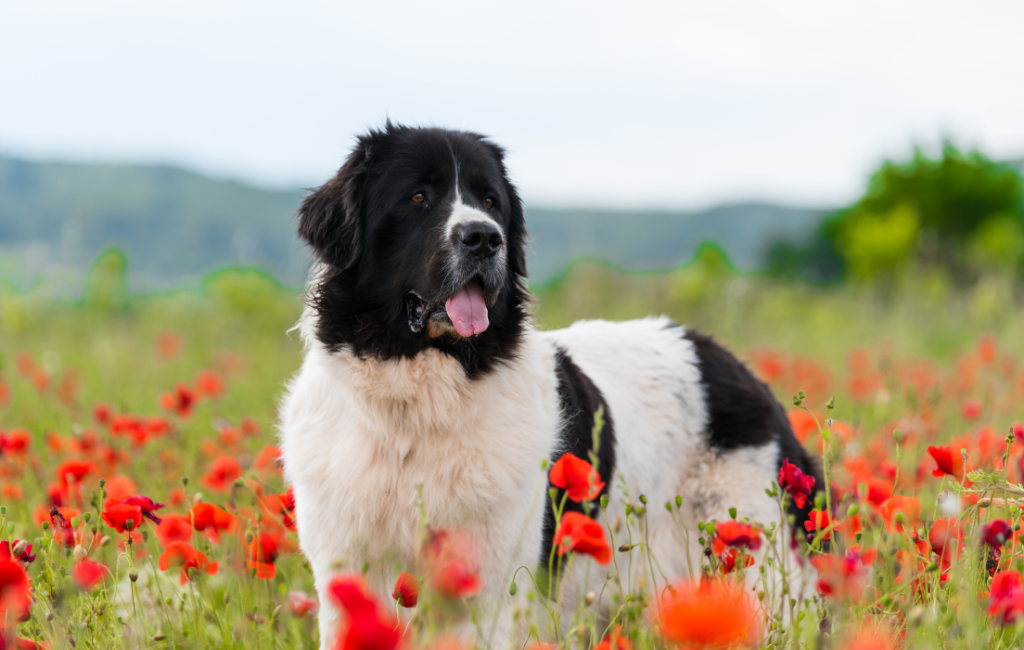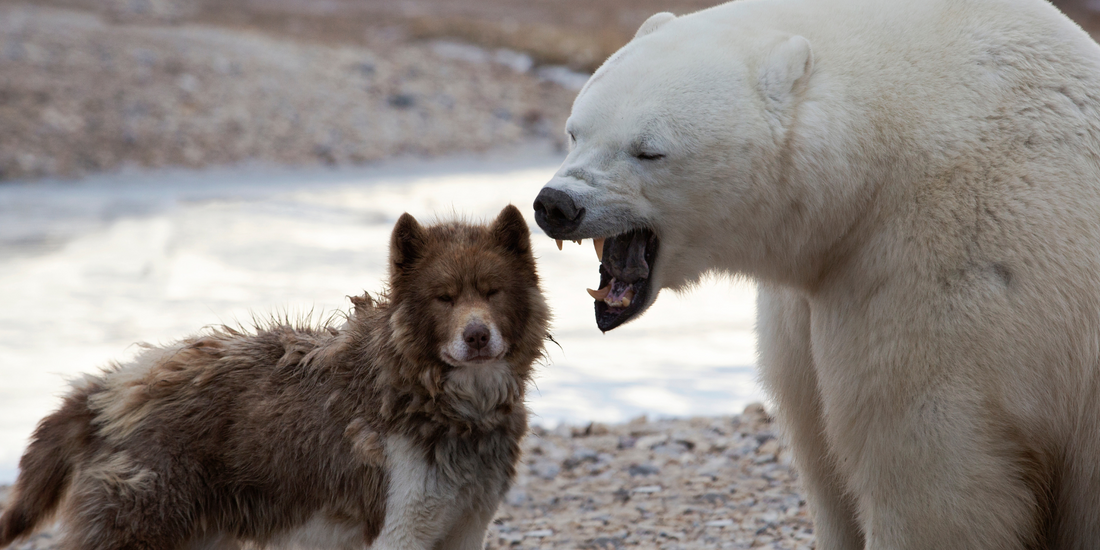Did you know that there are more than 350 dog breeds recognized worldwide that originate from all over the globe? Every type of dog was bred for a purpose - be it for companionship, herding, guarding, hunting and beyond. Looking at Canada specifically, here 10 Canadian dog breeds you may not have realized were dogs from Canada.
Canadian Eskimo Dog

The Canadian Eskimo Dog dates back up to 4,000 years ago when Inuit people kept them as pets and working dogs in the Arctic. They were bred to pull sleds and haul supplies, as well as hunt, find seal holes and keep predators (like polar bears) at bay. They are also known as the Qimmiq or Kingmik, Exquimaux Husky, and Esquimaux Dog. Although they sound and look somewhat like wolves, genetic testing and DNA analysis has shown the Canadian Eskimo Dog has no wolf ancestry.
In the 19th and early 20th centuries, Arctic and Antarctic explorers often chose Canadian Eskimo Dogs as companions. In fact, the breed was used at an Australian Antarctic station until 1992. They became so popular, it was estimated that there were more than 20,000 at one point in time. But the breed nearly went extinct by 1970 with the invention of the snowmobile and the rise of Siberian Huskies, who were smaller and faster. The population dropped to around 200, resulting in removal from the American Kennel Club registry. But Inuits, dedicated breeders, the Canadian Kennel Club, the Canadian Government and the Northwest Territories set out to save the breed. Though they remain rare, the Canadian Eskimo Dog is recognized as one of Canada's oldest breeds and iconic in Canadian culture.
Labrador Husky

The Labrador Husky is it's own distinct breed, not to be confused with a Labrador Retriever-Siberian Husky or Labsky mix. They were developed to be sled dogs and pack hunters on the coast of Labrador, Canada and believed to have originated around 1300 AD. Labrador Huskies have well-padded and webbed paws to run and pull sleds for hours and help with traction in the snow. And their chest is wide and deep to allow for more lung capacity needed for their endurance work. As the breed spread outside Labrador, they were used for search and rescue, as well as drug detection. The Labrador Husky's exact origins are unknown but their wolf-like appearance has some people believing they come from Northern Spitz-type breeds and wolves. It's also hypothesized they are part Alaskan Malamute to enhance their sledding skills and German Shepherd to improve trainability.
Labrador Retriever

The Labrador Retriever originated from Newfoundland (not Labrador, interestingly) and was originally referred to as St. John’s water dog. There were the smaller Newfoundland dog of the 1800s, bred to retrieve fish and game. They acted as the fisherman's aid, hauling in nets and doing any other task that involved swimming. Dogs with short, dense coats were preferred over those with long hair, as the latter would encrust with ice in the cold Canadian winter water. The thick, tapered tail (often called an "otter tail") served as a powerful rudder to aid in swimming while their webbed feet helped them swim more quickly.
The breed died out in Newfoundland because of a heavy dog tax but fortunately, English nobles visiting Canada had brought back what they called "Labrador dogs" in the 1800s (it's still unclear how they became associated with Labrador). In England, breeders crossbred the dogs with other retrievers, eventually refining and standardizing the breed. It was also here that the dogs earned their reputation as excellent retrievers of game, such as duck. The English Kennel Club recognized the breed in 1903 and the American Kennel Club in 1917, as its 74th breed. And thus began their rise in popularity, becoming the most popular breed in the United States since 1991.
Landseer

The Landseer is a black and white variety of the Newfoundland, but recognized as its own independent breed in continental Europe. Like the Newfoundland, the Landseer originated in Newfoundland as a working dog for fishermen. They are believed to descend from the now-extinct Canadian St. John’s water dogs, as well as other water dogs and livestock guardians imported by Portuguese, Spanish and Basque fishing vessels. Their black and white coat comes from a recessive piebald color gene in Newfoundlands. Because it's recessive, litters can have both bi-colored and solid colored puppies.
The bi-colored coat became more popular during the Victorian Era, but the solid black took precedence in the 20th century. As a response, Germany created a separate breed club for the bi-colored variety in 1976, with Belgium and Holland following soon after. Thus, the Landseer became recognized across continental Europe as it's own independent breed. Eventually, the Federation Cynologique Internationale and Continental Kennel Club recognized the breed as separate from the Newfoundland breed. But Great Britain, Canada and the U.S. consider them the same breed as Newfoundlands, often referring to them as “Landseer Newfoundlands.”
Newfoundland

Like the Landseer, the Newfoundland (or Newfie) originated in the early 1800s as a working dog for fishermen in Newfoundland. Tasks included hauling fishnets, carts and other equipment, as well as water rescues (they're big, strong and powerful enough to save a grown man from drowning). They were believed to descend from the now-extinct Canadian St. John’s water dogs, as well as other water dogs and livestock guardians imported by Portuguese, Spanish and Basque fishing vessels. Genetic testing and DNA analysis, however, has indicated that Newfies are related to Labrador retrievers, Irish Water Spaniels and Curly-Coated Retrievers. The breed excels at swimming thanks to its webbed feet, muscular build, and large lung capacity. In addition, their thick double coat served to insulate them in the cold waters.
Nova Scotia Duck Tolling Retriever

The Nova Scotia Duck Tolling Retriever originated in the Little River District of Nova Scotia’s Yarmouth County during the 19th century. Hunters bred themselves a dog to lure waterfowl within gun range and retrieve game from water. Their size, color and feathery tail make them look like foxes, which entices ducks into gun range. They were originally called Little River Duck Dogs but their method of hunting gave them their current longer name. "Tolling" comes from the Middle English word "tollen," meaning "to entice." Nova Scotia Duck Tolling Retriever is long, though, so they are often referred to simply as a "Toller."
Seppala Siberian Sleddog

The Seppala Siberian Sleddog originated in the early 1900s as a working dog, sled puller and pack animal. Legendary dog driver Leonhard Seppala developed the breed from Siberian sled pulling dogs adapted to cope with harsh winds, blizzards and frozen conditions. Seppala Siberian Sleddogs resemble wolves, with their long but sturdy legs and almond-shaped eyes. Their build helped them be superior sledders, with Seppala's dogs often winning every race they participated in.
Sepalla and his sleddogs were also part of the famous "Great Race of Mercy" when diphtheria struck the town of Nome and medicine was needed urgently. Because it was January of 1925, the only way to deliver the antitoxin serum was through sledding. Respected mushers were organized to create a relay that would deliver the medicine over 674 miles. Seppala and his sleddogs (with famous lead dog Togo) took on the most miles and most dangerous leg, traveling 260 miles over four and a half days with temperatures around -30 degrees. They successfully delivered the serum to the next musher and returned, traveling over 400 miles total.
The breed faced extinction by 1969 but kennels in Canada and the U.S. came together to revive the breed.
Hare Indian Dog (Extinct)

The Hare Indian Dog was developed in Canada and the U.S. during the 18th century. Their exact origin is unknown, though DNA analysis completed in 1984 confirmed they were hybrids of coyotes, wolves and domesticated dogs. The breed looked similar to those canines and dogs in the Spitz family with their pointed ears, broad base and elongated nose and muzzle. Bred as hunting dogs, they went extinct after the invention of firearms and guns replaced them.
Salish Wool Dog (Extinct)

The Salish Wool Dog was developed by indigenous people in what is now British Columbia. They lived with the Coast Salish Nations, who used their coats for blankets and clothing. Salish Wool Dogs existed for centuries before Europeans came in contact with them for the first time. Remains of the breed suggest they existed over 4,000 years ago. They were described as small dogs with erect ears, curled tails, fox-like expressions and long, thick, white coats. The Coast Salish people would sheer the dogs, but the importation of sheep and their wool resulted in the breed's extinction over 115 years ago.
Tahltan Bear Dog (Extinct)

The Tahltan Bear Dog was a hunting companion for the Tahltan people of Northern British Columbia for over 500 years. Their small size (12 to 16 inches tall and 10 to 18 pounds) allowed them to be carried on the backs of hunters. They usually hunted Grizzly and black bears, as well as big cats and beavers. If they encountered a bear, the dogs would work as a pack to distract it by barking and nipping. This allowed the hunters to make their move. The breed had large pointed ears, a tapered muzzle and a bushy tail that they carried upright. The invention of rifles eventually led to their extinction, with only six known to exist in 1975 and the final dog of the breed passing in 1979.

